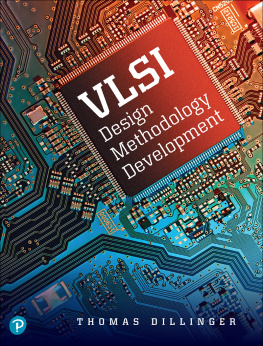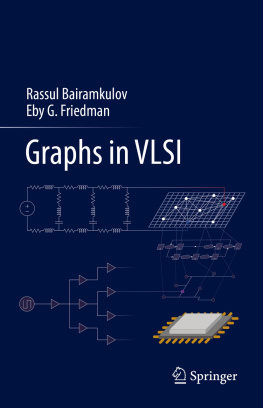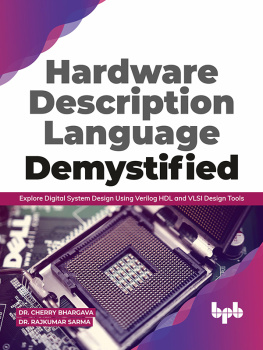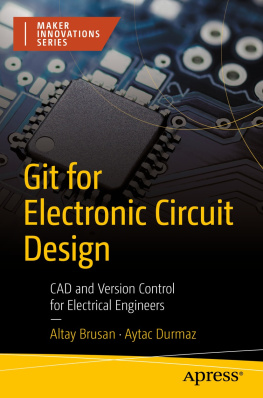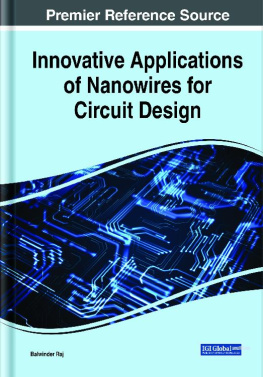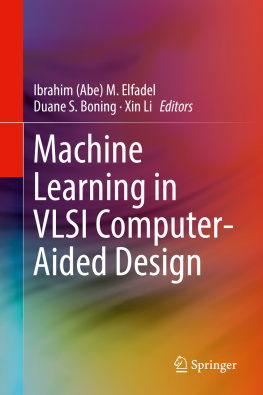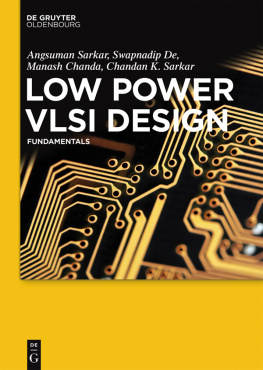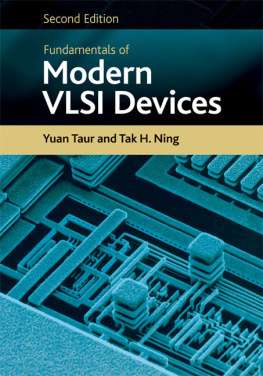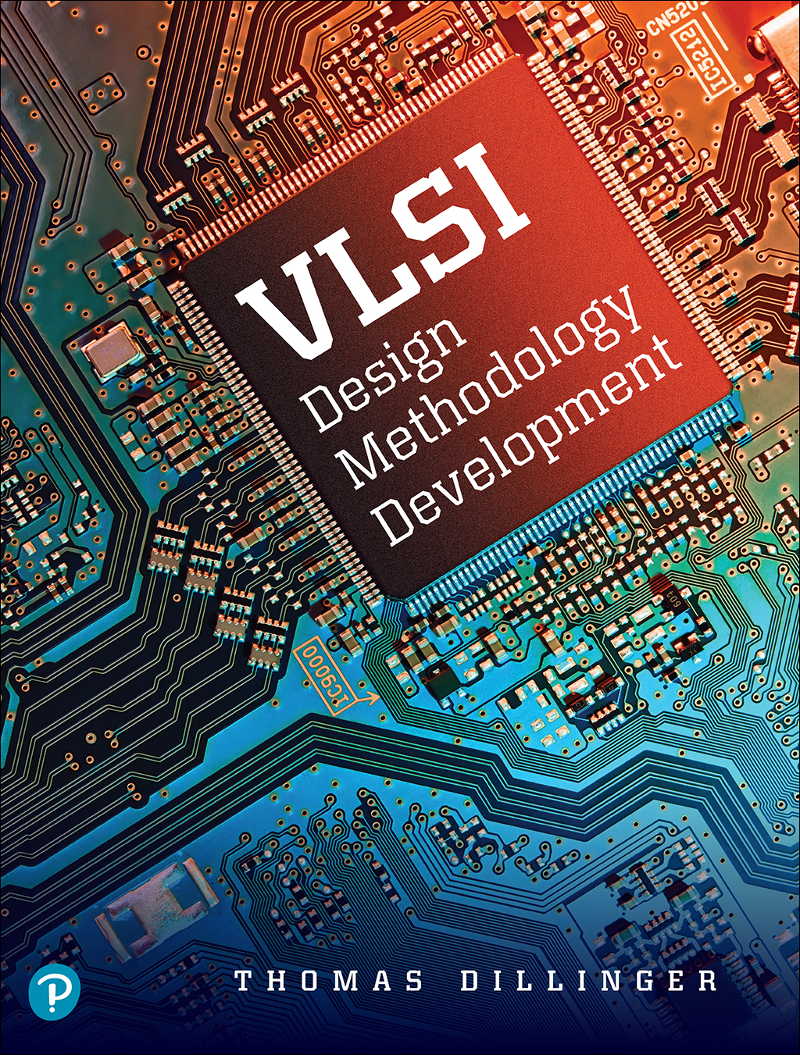ePUB is an open, industry-standard format for eBooks. However, support of ePUB and its many features varies across reading devices and applications. Use your device or app settings to customize the presentation to your liking. Settings that you can customize often include font, font size, single or double column, landscape or portrait mode, and figures that you can click or tap to enlarge. For additional information about the settings and features on your reading device or app, visit the device manufacturers Web site.
Many titles include programming code or configuration examples. To optimize the presentation of these elements, view the eBook in single-column, landscape mode and adjust the font size to the smallest setting. In addition to presenting code and configurations in the reflowable text format, we have included images of the code that mimic the presentation found in the print book; therefore, where the reflowable format may compromise the presentation of the code listing, you will see a Click here to view code image link. Click the link to view the print-fidelity code image. To return to the previous page viewed, click the Back button on your device or app.
VLSI Design Methodology Development
Thomas Dillinger
Many of the designations used by manufacturers and sellers to distinguish their products are claimed as trademarks. Where those designations appear in this book, and the publisher was aware of a trademark claim, the designations have been printed with initial capital letters or in all capitals.
The authors and publisher have taken care in the preparation of this book, but make no expressed or implied warranty of any kind and assume no responsibility for errors or omissions. No liability is assumed for incidental or consequential damages in connection with or arising out of the use of the information or programs contained herein.
For information about buying this title in bulk quantities, or for special sales opportunities (which may include electronic versions; custom cover designs; and content particular to your business, training goals, marketing focus, or branding interests), please contact our corporate sales department at or (800) 382-3419.
For government sales inquiries, please contact .
For questions about sales outside the U.S., please contact .
Visit us on the Web: informit.com/aw
Library of Congress Control Number: 2019937605
Copyright 2019 Pearson Education, Inc.
All rights reserved. This publication is protected by copyright, and permission must be obtained from the publisher prior to any prohibited reproduction, storage in a retrieval system, or transmission in any form or by any means, electronic, mechanical, photocopying, recording, or likewise. For information regarding permissions, request forms and the appropriate contacts within the Pearson Education Global Rights & Permissions Department, please visit www.pearsoned.com/permissions/.
ISBN-13: 978-0-13-573241-0
ISBN-10: 0-13-573241-7
ScoutAutomatedPrintCode
Acquisitions Editor
Malobika Chakraborty
Managing Editor
Sandra Schroeder
Senior Project Editor
Lori Lyons
Copy Editor
Catherine D. Wilson
Production Manager
Abirami Ulaganathan
Indexer
Erika Millen
Proofreader
Christopher Morris
Cover Designer
Chuti Prasertsith
Compositor
codeMantra
To Pat, for his inspiration
and
To Martha, who loved to write
Contents at a Glance
Register your copy of VLSI Design Methodology Development at informit.com for convenient access to downloads, updates, and corrections as they become available. To start the registration process, go to informit.com/register and log in or create an account. Enter the product ISBN 9780135732410 and click Submit. Once the process is complete, you will find any available bonus content under Registered Products.
Preface
This book describes the steps associated with the design and verification of Very Large Scale Integration (VLSI) integrated circuits, collectively denoted as the design methodology. The focus of the text is to describe the key features and requirements of each step in the VLSI methodology. The execution of each step utilizes electronic design automation (EDA) software tools, which are invoked by a script that manages the design configuration, assembles the input data, allocates the IT job resources, and interprets the output results. The script is commonly referred to as the flow for the specific methodology step. This book covers both the underlying EDA tool algorithms applied and the characteristics of the related flow. Specific attention is given to the criteria used to assess the status of a design project as it progresses toward the release to fabrication.
The audience for the text is senior-level undergraduates and first-year graduate students studying microelectronics. Professional engineers will also likely find topics of interest to expand the breadth of their expertise. In many cases, the discussion of a specific step extends beyond the design engineering considerations to include the perspective of a project manager, a design automation engineer, a fabrication technology support engineer, and, to be sure, a member of the project methodology team.
It has been my experience that graduating engineers pursuing microelectronic hardware design would benefit from broad exposure to all facets of a VLSI design project and an understanding of the interdependencies between the various engineering teams. The goal of this book is to provide a comprehensive discussion of a VLSI design methodology at a level of technical detail appropriate for a two-semester, project-oriented course of study.
The book is targeted toward a discussion style of presentation rather than formal lectures. The text often highlights the trade-offs that are evaluated when selecting a specific approach for a design methodology step. An interactive discussion among the students provides an opportunity comparable to the engineering environment as part of a design team.
There are no chapter problems provided in this book. However, many universities participate in EDA vendor programs that provide access to individual software tools. This text would work extremely well in combination with such a program. After reviewing a step as a constituent of the overall design methodology, students would be able to exercise the corresponding EDA tool. Projects of larger scope could be incorporated to align with individual student interestsincluding flow scripting, pursuing power/performance/area evaluations, designing (cell-based) circuits, and developing methodology policies and the software utilities to verify those design standards. Projects would typically culminate in a final presentation to the class.
The text is divided into six major topics.. This repetition reflects the importance of the ECO methodology for a design project. Another example is the pervasive impact of lithographic multipatterning in advanced fabrication process nodes. The decomposition of the design data for a mask layer into (individually resolvable) subsets needs methodology support throughout design implementation, analysis, and physical verification flows. The influence of multipatterning is therefore described in multiple chapters.
The references provided with each chapter are rather sparse and in no way reflect the exceptional research that has enabled the complexity of current VLSI designs. The references listed are often among the landmark papers in their specific disciplines. A search for the technical papers that have recently cited these references will enable the reader to develop a more comprehensive bibliography. The website http://www.vlsidesignmethodology.com provides links to errata and additional technical publications of interest.

